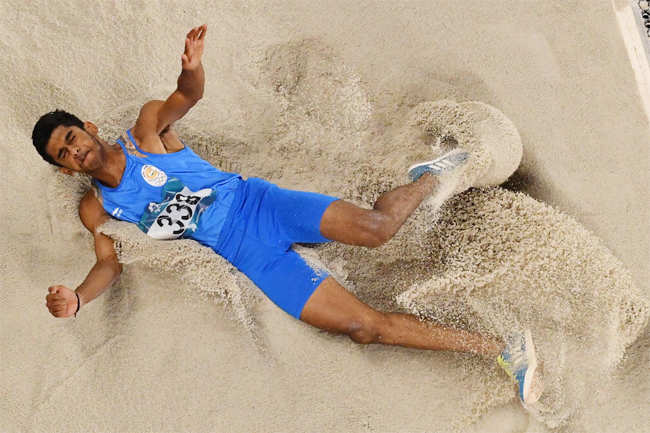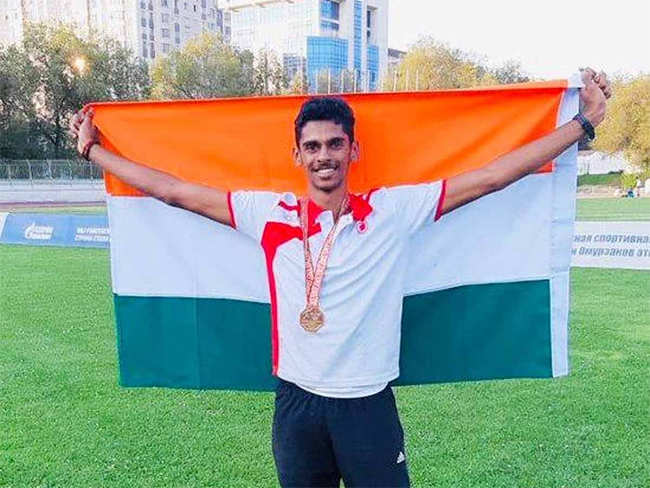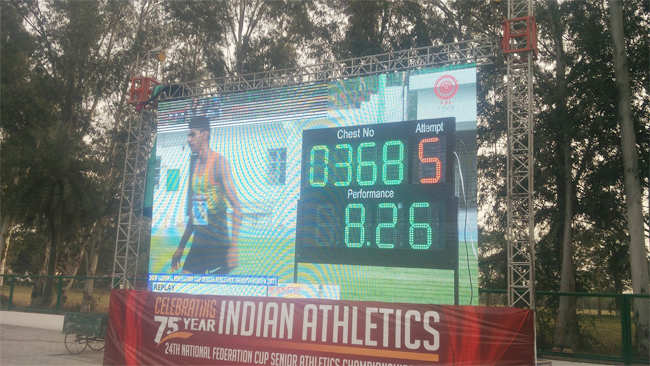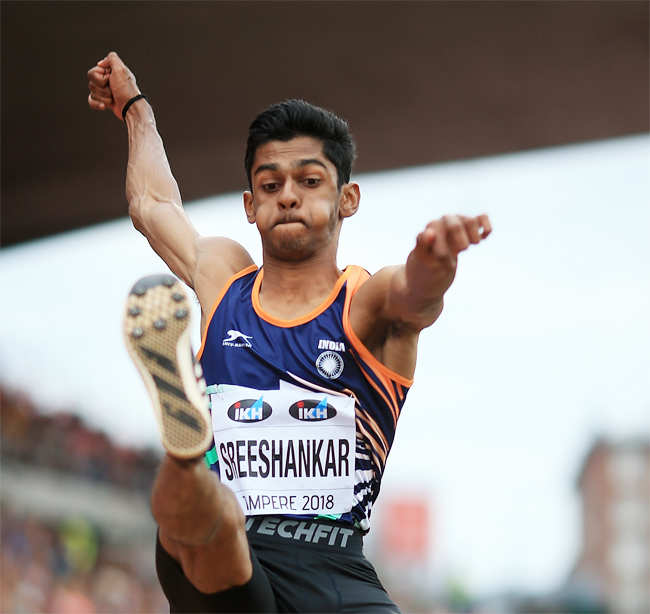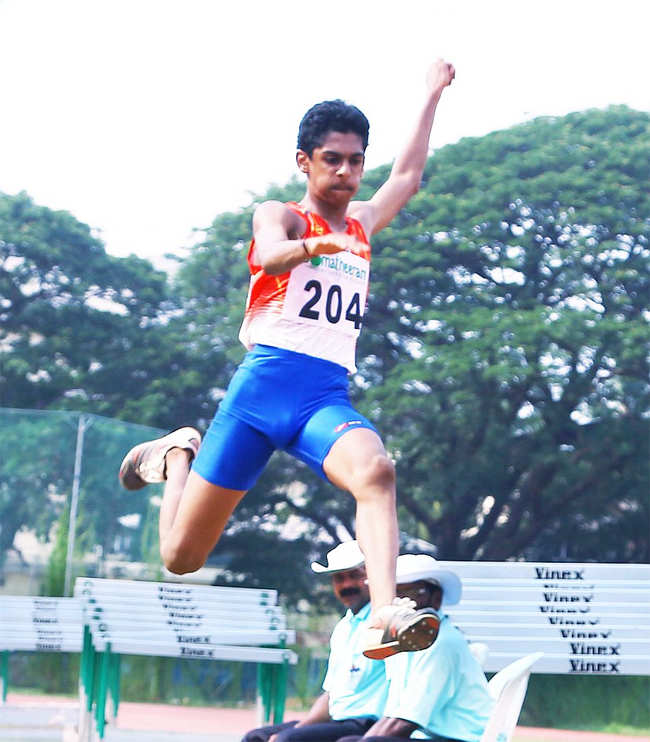NEW DELHI: He stood there, almost in disbelief, with ‘has it happened?’ writ large on his face. The measuring tape kept stretching until it reached 8.26m. It was a new national record for men’s long jump, and beyond the Olympic qualifying mark of 8.22m. Murali Sreeshankar will be going to the Games in Tokyo.
The pain of a ruptured appendix, the five-month recovery layoff, missing the 2018 Commonwealth Games (CWG) had all disappeared with a ‘giant leap’. The family of athletes from the Palakkad district in Kerala is set to have an Olympian in the house.
“There was a marker for the Olympic qualifying and national record. I went above that mark.” The excitement in Sreeshankar’s voice was discernible, as he answered Timesofindia.com’s call after returning home. “Finally, the scoreboard showed 8.26m…I was waiting for this for a long time.”
The relief in Sreeshankar’s voice was apparent too. Years of hard work that he and his father, Murali, had put together has helped them reap their richest dividend.
The 21-year-old student of BSC mathematics is coached by his dad, who was a triple jumper and won a silver medal at the South Asian Games, while his mother, KS Bijimol, was an international track athlete, running 800m.
Murali Sreeshankar (Image credit: We Are Team India’s Twitter handle)
“It’s all because of my dad’s proper planning from a young age that I was able to achieve this feat. He developed me in a proper way, meticulously, with all the fundamental aspects of training,” Sreeshankar told TimesofIndia.com.
FATHER’S ADVICE
The national record-holder recalled the days when his father would tell him why he should focus on long-jump and not think about becoming a triple-jumper like him.
“He used to show me his knees, they are still swollen, his patellar tendon is completely swollen…When we do the triple-jump, almost twice of the body weight comes on one leg. So you need to have that kind of strong legs to stay away from injury.
“He [father] would say if I do the triple jump, then I may get injured all of a sudden and that would really affect my performance. And the long jump was working for me well. He said why to attempt triple jump unnecessarily when I was doing great in an event. So I just focussed on the long jump,” said the student of Palakkad Victoria College.
(Image credit: SAI Media)
But to reach where he has, Sreeshankar had to endure a tough phase in 2018, when surgery for a ruptured appendicitis forced him to skip the CWG. From there to jumping above 8 metres in all five attempts of a competition is the stuff of dreams.
“This is the first time when I had all the jumps above 8 metres. It was the best series for me ever. The last time I had two jumps above 8m was 8:11 and 8:20. It’s a really good sign for me.”
IT ALL STARTED AS A FUN ACTIVITY
When a nine-year-old Sreeshankar won a 50m medal in a district-level competition, his father, perhaps, spotted that the athletics DNA had been passed on to his son.
“That was for fun, not so serious. Now I understand the gravity of it,” the long-jumper told Timesofindia.com.
“I started my sporting career seriously when I was in 10th standard. Till then I was doing it for fun only, fun in the sense that I was not serious about it. But after that, I started serious training with my father.”
He trains under his father in his hometown, an arrangement he has been allowed by the Athletics Federation of India seeing his progress over the years.
Photo credit: Athletics Federation of India
“The federation has also been very supportive towards me because they have allowed me to train under my dad in my hometown. They have given me this special privilege because they have seen my progress,” said Sreeshankar, who is also a beneficiary of the Target Olympic Podium Scheme (TOPS).
‘NEED QUALITY COMPETITION ON THE ROAD TO TOKYO’
The bronze medal at the 2016 Rio Olympics was won for a 8.29m jump (Greg Rutherford of Great Britain). The silver medal at the London Olympics in 2012 was clinched at 8.16m (Mitchell Watt of Australia). That, in a way, is a reminder that comparing performances with those in the past can be a futile exercise.
The performance depends a lot on form and conditions on the day.
“At the London Olympics, the silver medal was just 8.16m because it was very, very cold there….That was one reason why the performances in London were not as expected,” said Sreeshankar, whose first international medal was a bronze at the 2018 Junior Asian Championships.
“Conditions in Rio were quite ideal, but if I have to say that I want to win a medal at the Olympics, then I need to be mentally tougher. There comes the role of having proper international exposure. If I get some good competition with the top-class [ranked] guys, I will definitely be able to make a mark at the Tokyo Olympics,” he told TimesofIndia.com with a sense of promise.
Murali Sreeshankar (Getty Images)
“One thing is sure. If I am able to jump above 8.40m in Tokyo, then I will definitely land on the Olympic podium.”
THE USAIN BOLT GIFT FOR LITTLE SREE
Sreeshankar’s mother and Shiny Wilson, a former Indian women’s 800m national-record holder used to train together in national camps. Their friendship has strengthened over the years, and she has been one of the positive influences in Sreeshankar’s career.
“Actually Shiny Wilson ma’am is very close to my family…She helps me in the technical aspect. After every competition, she would call me, congratulate, motivate,” said Sreeshankar.
“Some of her [Shiny’s] relatives live in my district. So whenever she comes to Palakkad, she would come to our house and inquire how my training was going, how the competition season was going.”
The Usain Bolt fan in Sreeshankar couldn’t thank Shiny enough for the gift she brought for a 12-year-old.
Murali Sreeshankar (TOI Photo)
“She went for the London Olympics and brought me a Usain Bolt edition Puma T-shirt. I was really happy to have it. I would wear it for all my competitions. It was kind of a lucky t-shirt for me,” Sreeshankar recalled.
“I am an Usain Bolt fan. He has taken athletics to a whole different level, made it very popular.”
NOTE OF THANKS
Sreeshankar believes if it were not for the financial assistance received from TOPS, his career would not have progressed as smoothly and successfully as it has.
“The Sports Ministry and the government have been really, really supportive. It’s because of TOPS that I get financial assistance; and I am really happy that TOPS has been supporting me,” he said.

